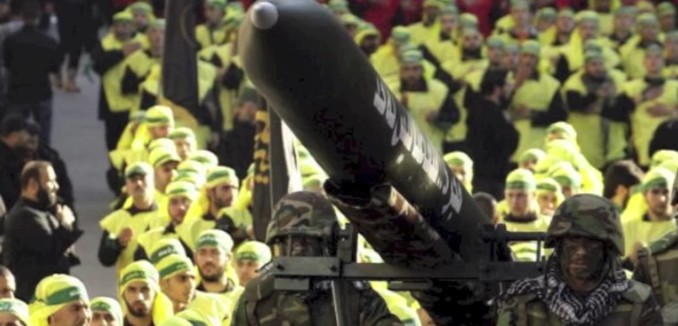Experts on the Iran-backed terrorist organization Hezbollah discussed its increased dominance in Lebanon at a House hearing on Tuesday, including how the group’s activities and strategies increase the likelihood of a future, more deadly war with Israel.
“Hezbollah has made Lebanon complicit both financially and economically, as well as militarily because of all the weapons that it’s moving from Syria that it’s getting from Iran and is storing the majority of it in civilian areas,” said Tony Badran, a research fellow at the Foundation for Defense of Democracies. “Hezbollah has essentially painted a big target on the back of all of Lebanon.” Israeli officials have warned that by moving most of its military infrastructure into Shiite villages in southern Lebanon, Hezbollah is placing Lebanese civilians at risk and using them as a human shields. “At the end of the day, it means that many, many Lebanese will be killed,” said former Israeli National Security Advisor Yaakov Amidror.
Badran asserted that “strategic weapons that are being moved to Lebanon, as well as Hezbollah’s entrenchment in Syria and its expansion into the Golan along with the IRGC, and the building of new infrastructure on Syrian soil, creates a situation for Israel that will, I think, accelerate upcoming future conflict which… is going to be far bloodier than we’ve ever seen on both sides.”
Former Treasury official Matthew Levitt estimated that Hezbollah now has 130,000-150,000 rockets, while Badran stated that Hezbollah has the capacity to launch up to 1,500 rockets at Israel per day. The terror group has also gained additional military expertise and experience through its operations in Syria and from fighting alongside the Russians. Levitt further noted that Hezbollah now has more sophisticated weapons, including more guided systems and GPS kits from Iran, which can be attached to unguided rockets. He observed that the Israelis “are trying to cope with a situation where hundreds of rockets are fired at specific buildings in Tel Aviv and one can understand why they won’t tolerate that type of situation” and why “from a deterrent perspective that if it happens, their response will be much more severe than it has been in the past.”
Daniel Byman, professor of Security Studies at Georgetown, also testified on Tuesday that United States efforts to build up the Lebanese Armed Forces to counter Hezbollah had failed. Badran argued that given the growing partnership between Hezbollah and the LAF, and Saudi Arabia’s recognition that the LAF is acting as an auxiliary force to Hezbollah, the U.S. needs to reassess how its support for the LAF can sustain and entrench Hezbollah’s grip on Lebanon. LAF officials and analysts have acknowledged that the LAF collaborates with Hezbollah, sharing intelligence and assisting the terror group. The New York Times reported in 2014 that “American intelligence shared with the [Lebanese] army, according to Lebanese experts on Hezbollah,” had filtered down to Hezbollah. Regarding Hezbollah’s overall influence in the country, Badran concluded, “Dealing with Lebanon as though there is a separation between Lebanon and Hezbollah becomes increasingly difficult.”
Badran added that whereas President Barack Obama has stated that any solution to Syria must respect Iranian “equities” in Syria, Israeli officials are warning that any solution to the crisis in Syria cannot leave Iran in position of dominance or control of the Golan area. Israeli Defense Minister Moshe Yaalon recently remarked during a visit to Washington that allowing Iran to dominate Syria would be a “mistake.” President Reuven Rivlin similarly insisted to Russian President Vladimir Putin that any future agreement on Syria must not strengthen Iran and Hezbollah, emphasizing that Iranian and Hezbollah outposts on the Israeli-Syrian border would be considered by Israel to be a red line.
[Photo: otuzniak / YouTube ]




